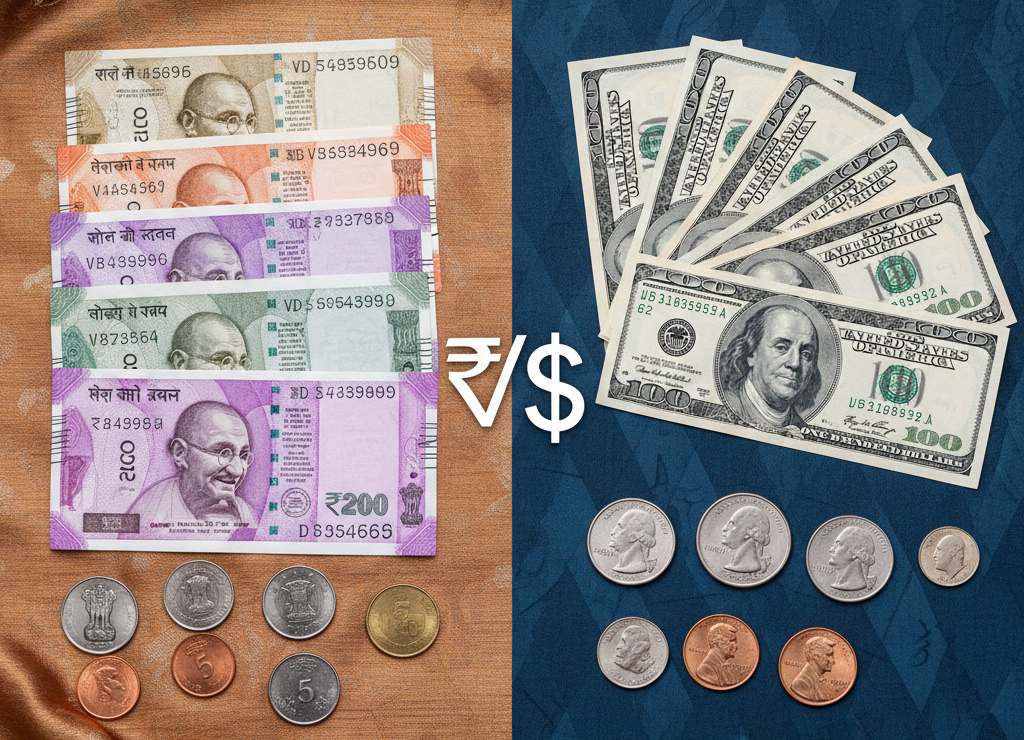As Dhanteras 2025 draws near, the age-old tradition of purchasing gold once again takes center stage for millions of Indians. However, with gold prices at record highs, investing this festive season needs more than emotion; it requires smart planning and good timing.
Whether you’re buying for auspicious reasons or as part of a long-term investment plan, understanding the right ways to buy gold amid market volatility can help safeguard your wealth. With gold prices touching record highs of around ₹1.2–1.3 lakh per 10 grams, buyers need to be cautious of rising premiums, making charges, and price swings. To help you invest smartly this Dhanteras, here are five expert-backed strategies based on the latest market trends.
Expert Tips for Gold Investment on Dhanteras 2025
1. The Traditional Way — Bars, Coins, and Jewellery
Pros:
Buying gold in its physical form—whether as bars, coins, or jewellery—offers the comfort of owning something tangible. It’s easy to liquidate since jewellers and bullion dealers readily buy it back, and jewellery also carries emotional and ornamental value.
Cons:
However, this convenience comes at a cost. Jewellers often charge 5%–20% as making charges, which are non-recoverable when you sell. Storage and insurance add extra expenses, and there’s always a risk of purity issues. To avoid this, always buy hallmarked gold from trusted jewellers or certified dealers.
Investment Tips:
- Prefer lightweight jewellery to reduce making charges.
- Purchase coins or bars with a BIS hallmark (999 purity).
- Avoid paying more than 1–2% above the prevailing gold rate.
- Be mindful of market timing—at record-high prices, even small mistakes can affect returns.
Physical gold remains ideal for festive gifting or traditional purposes, but it’s best to keep it as a small portion of your total gold investment portfolio.
2. Sovereign Gold Bonds (SGBs)
Overview:
Sovereign Gold Bonds, issued by the Government of India, are paper or digital forms of gold investment—each unit representing a specific gram value of gold. Returns move in line with gold prices, and investors also earn a fixed interest of about 2.5% per year during the bond’s tenure.
Advantages:
SGBs are especially attractive when gold prices are high. There are no making charges, no storage or insurance costs, and investors earn interest in addition to price appreciation. Since these bonds are government-backed, the risk is very low. On maturity, investors receive the equivalent market value in cash, and capital gains on redemption are tax-free (though the annual interest is taxable).
Disadvantages:
The main drawback is the longer lock-in—bonds have an eight-year maturity, though early exit is allowed after five years. Liquidity through the secondary market can vary, and prices may trade at a premium or discount depending on demand. The interest income is also taxable as per your income slab.
Investment Tip:
For those planning to hold gold for the medium to long term, Sovereign Gold Bonds are one of the smartest and most cost-efficient options—especially when prices are at record highs—since they eliminate most of the costs and risks linked to physical gold.
3. Gold ETFs and Gold Mutual Funds
Overview:
Gold Exchange-Traded Funds (ETFs) and Gold Mutual Funds are digital or “paper” forms of gold investment. They track gold prices by investing in physical gold or gold futures. While Gold ETFs directly hold gold, Gold Mutual Funds typically invest in these ETFs or related instruments—making them easy entry points for investors without needing a Demat account in some cases.
Advantages:
Gold ETFs offer high liquidity and convenience—you can buy or sell them anytime through your brokerage account, just like stocks. There are no worries about purity, storage, or making charges, and you can start investing with small amounts. Transaction costs are generally lower compared to buying physical gold.
Disadvantages:
Though you avoid making and storage costs, ETFs and mutual funds charge a small management fee (expense ratio). They also don’t offer interest income like Sovereign Gold Bonds—the returns depend entirely on gold price movements. In volatile markets, this can make returns unpredictable.
Investment Tip:
Gold ETFs are great for investors seeking short-term flexibility—you can easily redeem them or convert your investment into physical gold during festivals like Dhanteras or Diwali. If you can handle short-term price fluctuations, they offer a simple and efficient way to add gold exposure to your portfolio.
4. Digital Gold
Overview:
Digital gold allows you to buy and own gold online through fintech apps or jeweller-backed platforms in small denominations—starting from as little as ₹100. Each purchase is backed by real physical gold securely stored in insured vaults.
Advantages:
It offers an easy and affordable way to invest in gold instantly, even in fractional grams. You can later redeem your holdings for physical gold coins or bars, or in some cases, convert them into Gold ETFs. There are usually no storage or handling costs, making it a convenient option for small, flexible investments.
Disadvantages:
However, digital gold carries a level of “platform risk”—the reliability of the provider matters. Always choose platforms with audited, insured vaults. Small trades may attract slightly higher premiums, and redemption may involve additional charges such as freight or conversion fees, which can lower your returns.
Investment Tip:
Digital gold is best suited for small, festive purchases or gifting—ideal for occasions like Dhanteras. It also works well for gradually increasing your gold exposure without needing to visit a jewellery store.
5. Gold-Linked Instruments
Overview:
Gold-linked instruments—such as gold futures, mining stocks, and commodity or multi-asset funds—are less common among casual investors but can appeal to those serious about diversifying their gold portfolio.
Types:
- Gold Futures/Derivatives: Contracts to buy or sell gold at a future date. They offer high leverage but come with high risk.
- Gold Mining/Metal Stocks: Instead of owning physical gold, you invest in companies involved in gold mining or refining.
- Commodity/Mutual Funds: Some funds allocate a portion of their portfolio to gold or silver instruments, providing indirect exposure.
Pros and Cons:
These options are riskier than traditional gold investments but can deliver higher returns—or losses—depending on market movements. They allow investors to benefit from gold price upside through leverage or equity exposure, rather than holding gold passively.
Investment Tip:
Gold-linked instruments are useful for creating a “dynamic” part of your portfolio. They help ensure that your gold allocation doesn’t feel like idle money, especially if physical gold prices remain stagnant.
How to Invest In Gold?
- Avoid trying to time the market perfectly: Gold prices are already high, and waiting for a big dip can be risky, as corrections may be small. Spread your purchases over a few days (dollar-cost averaging) to reduce the impact of short-term volatility.
- Watch transaction costs: High premiums, making charges, or brokerage fees (2–3% or more) can eat into your gains. Choose low-cost investment channels wherever possible.
- Verify credentials: For physical or digital gold, ensure hallmarks, audits, and vault insurance are in place. For Sovereign Gold Bonds or ETFs, check issuer credibility and regulatory compliance.
- Diversify your gold portfolio: Don’t rely solely on jewellery. Combine physical gold, paper gold, and bonds to balance risks and returns.
- Understand tax rules and holding periods: Capital gains vary depending on the type of investment and holding period. Sovereign Gold Bonds are tax-friendly if held until maturity, while ETFs and mutual funds follow different regulations.
- Stay disciplined: If gold prices rise faster than expected, have a plan to take partial profits. This helps manage risk and maintain balance in your overall portfolio.
Final Thoughts
Buying gold on Dhanteras is a cherished tradition, but with 2025 prices at record highs, blending festive sentiment with smart strategy is key. Spread out your purchases, focus on purity, minimize hidden costs, and choose formal investment options whenever possible. Keep tax implications and exit plans in mind, and always be cautious of counterfeits or unreliable sellers.








